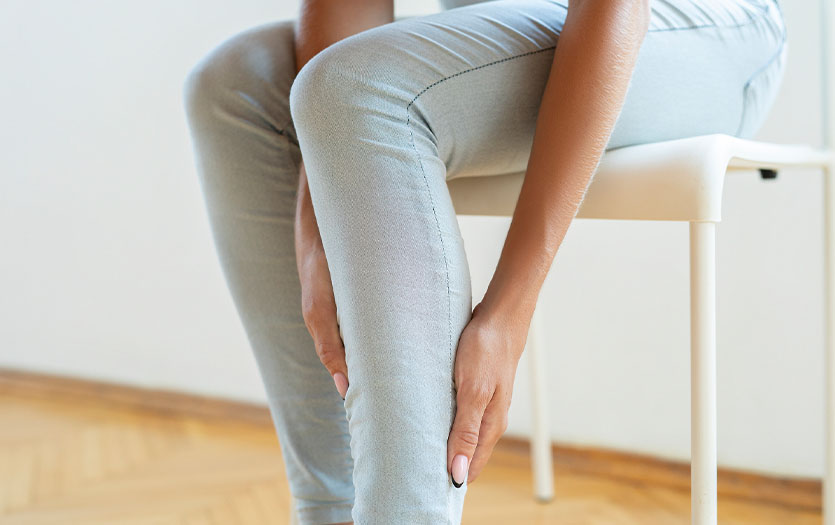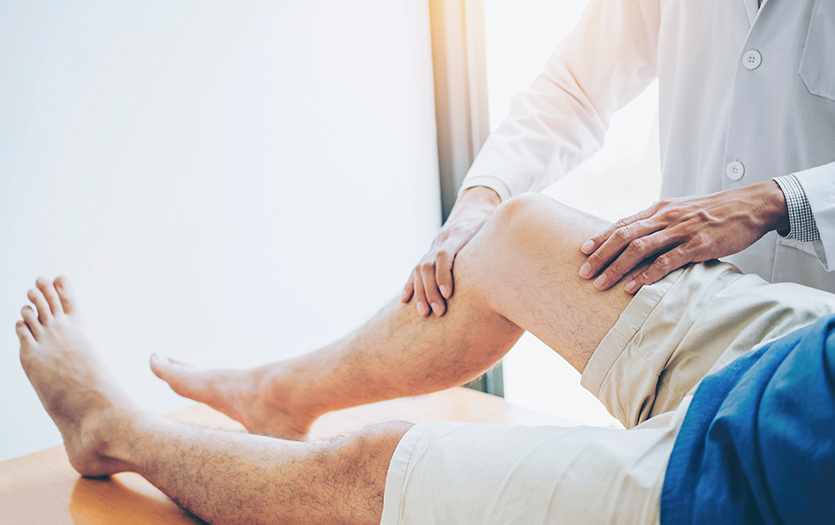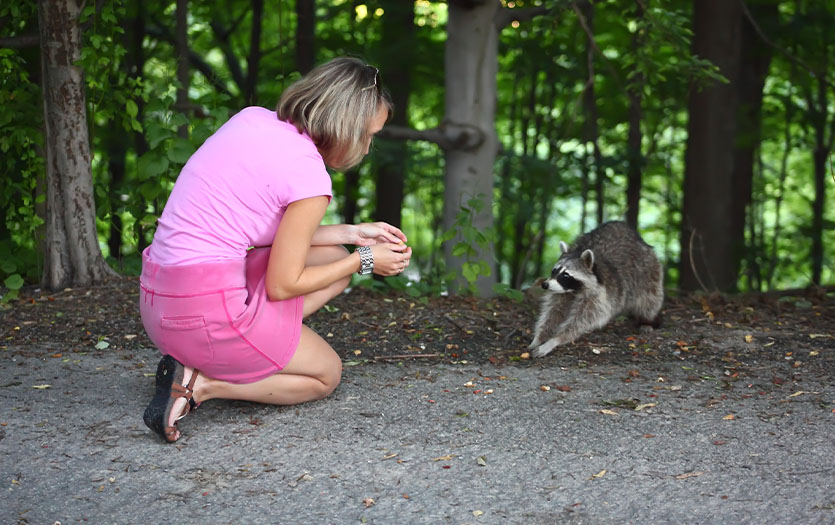
After a long day of activity and demands, there‘s nothing better than finally falling into your bed for a rejuvenating night of sleep. But if you have restless legs syndrome (RLS), this is when the trouble begins–the feeling of prickling, pulling and crawling taking over. These unsettling sensations in your legs, and sometimes throughout your entire body, make it nearly impossible to relax. According to the National Institute of Neurological Disorders and Stroke (NIH), as many as 10% of the United States population has this nervous disorder.
What is RLS?
RLS is a disorder related to sensation and movement, typically characterized by unpleasant feelings in parts of the body when you lie down to sleep. Most people also have a very strong urge to move, which can sometimes make them feel better. RLS usually affects the legs, as the name implies, but you can experience unpleasant feelings in the arms, torso or even a phantom limb (part of a limb that has been amputated).
What causes RLS?
There isn’t always a clear reason for restless legs, but it can be linked to:
· Genetics (hereditary)
· Lack of iron
· Pregnancy
· Kidney failure
· Rheumatoid arthritis
· Diabetes
· Nerve damage
· Anemia
· Parkinson’s disease
How can I get relief from my RLS symptoms?
There are ways to improve the severity of restless legs sensations at home, including:
Try regular, moderate exercise.
If you have RLS, avoid long periods between workouts and sudden bursts of intense activity. It’s always best to talk to your doctor before you start a new exercise program.
Try heat or cold.
Your symptoms may be relieved by bathing in hot or cold water. You can also try a heating pad set on low, hot water bottle or ice bag. Be sure to keep a cloth between the heating pad, hot water bottle or ice bag on your skin.
Practice good sleep habits.
Fatigue can make your symptoms worse, so it’s important to maintain healthy sleep hygiene. Keep your bedroom cool, quiet and comfortable. Use your bed only for sleeping, not for watching TV or other activities. Follow a regular and consistent sleep and wake schedule.
Try stretching and massage.
You may be able to control your symptoms by gently stretching and massaging your limbs before bed or as discomfort begins.
Avoid caffeine, tobacco and alcohol.
These may aggravate or worsen your symptoms.
Limit certain medicines.
Some prescription and over-the-counter medications (such as cold and sinus medicines) can make RLS symptoms worse. Pay close attention, and if you notice a correlation, talk to your doctor about alternatives for treatment.
Avoid being confined for long periods.
When possible, form a plan for occasions when you will need to remain seated for extended stretches of time. For example, if you are traveling to a far destination by car, incorporate or request plenty of stops so you can get out and walk around.
Avoid excessive exercise.
Although moderate exercise may help relieve symptoms, unusually intense workouts may make them worse. Identify a level of exercise that helps as well as the threshold for the amount of exertion that triggers RLS sensations.
See your doctor if your symptoms do not improve, if they become worse or if they significantly interfere with your sleep and daily functioning.
Is there a treatment for RLS?
Treatment is based on the type of symptoms you have and how bad they are.
First treatments
Changing your daily routine is sometimes enough and typically where a provider will advise you to start. As mentioned above, it may help if you do things like stretch, walk, exercise regularly, get massages, or take a hot or cold bath. Losing weight and avoiding smoking, alcohol and caffeine can also be beneficial.
If your symptoms are caused by another medical problem, like diabetes or an iron deficiency, you will be treated for that problem first. For example, you'll take iron supplements if you are anemic. If RLS starts during pregnancy, your doctor may just recommend exercise and stretching.
If you make positive lifestyle adjustments and don’t see any improvement, your doctor might reevaluate your symptoms, as many other health problems, including vitamin and mineral deficiencies, have similar presentations.
For children, regular exercise and a healthy sleep routine are usually the best place to start. If those don't work, the doctor may prescribe medicine.
Medication
If your symptoms don't improve with lifestyle modifications, your provider may prescribe medicine. These include:
- Dopamine agonists, such as ropinirole (Requip)
- Anticonvulsants, such as gabapentin (Neurontin) or gabapentin enacarbil (Horizant)
In some cases, your doctor may recommend an opioid pain medicine.
If your provider prescribes medication, be sure to talk about the possible benefits and risks and let them know about all of the other medicines you take. Some drugs, such as antidepressants, can cause RLS symptoms, so it’s important to offer a full list of prescriptions and supplements.
If you're taking a dopamine medicine and your symptoms change, tell your doctor. Don't stop taking your medicine without talking to them first. Your provider may recommend different medicines or a combination of medications to arrive at a treatment option that works best.
Other treatment options
Your doctor may have you try other treatments, such as:
- A pneumatic compression device. This machine pumps air in and out of sleeves, making them tight and loose around your legs while you are resting.
- Vibrating pads (Relaxis). These pads send vibrations to your legs and may improve sleep.
Symptoms of RLS can vary and fluctuate in severity over time based on a range of variables. If restless legs are affecting your sleep and daily habits, it’s important to contact your doctor. If you are looking for a provider, visit parkview.com to get connected with a physician that can help restore your quality of life.
Copyrighted material adapted with permission from Healthwise, Incorporated. This information does not replace the advice of a doctor.



